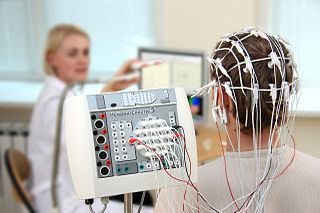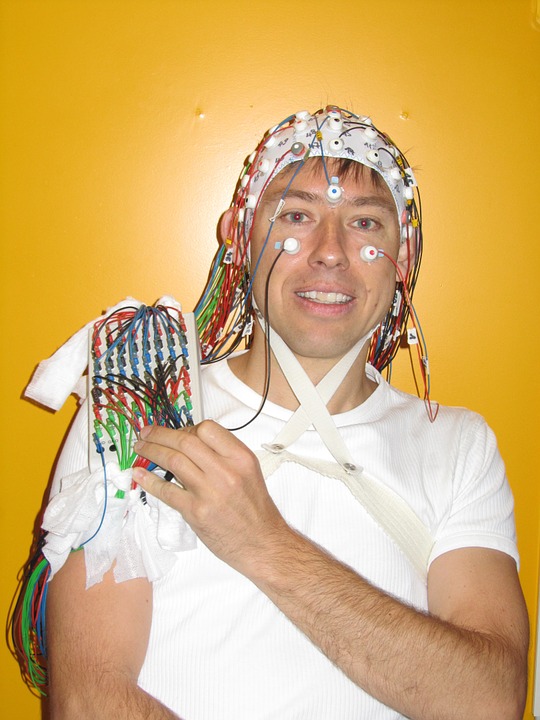Which EEG type is best?

Since epilepsy is a disorder affecting the electricity of the brain, the electroencephalogram (EEG) is critical in the evaluation of people with seizures. For many years, EEG meant “routine” EEG, a brief (20 to 30 minutes) recording without video. Over the last 20 years, progress in digital technologies has helped EEG evolve in 2 major ways:
- The ability to record video at the same time
- The ability to record for long periods of time
There are now many types of EEG and many different terms used to describe them.
What Are The Different Types Of EEGs?
- Routine EEG: may take only 20 to 30 minutes, usually without video (but this can easily be added). Often this is done with standard “activation procedures” that increase the chance of capturing seizure-like discharges or even seizures. The most common are photic stimulation (fast, flashing lights or patterns), hyperventilation (very quick breathing), and sleep deprivation (staying up late the night before).
- Prolonged EEG: 1 to 2 hours may be done with or without video.
- Ambulatory EEG: recording the person's EEG in the outpatient setting or at home, usually for 1 to 3 days. The length of recording can vary and it may be done with or without video.
- EEG-video monitoring: this is usually assumed to be inpatient and prolonged (done over a number of days).
- Long-term monitoring: this term is confusing because it only refers to length of testing. It does not necessarily include video, and there is no definition of how many hours make up “long term.” It is usually associated with video recording even though it is not in its name. This term is often used to mean the same thing as EEG-video monitoring.
- Epilepsy monitoring and EEG monitoring are general terms that specify neither what is monitored (video or not) nor for how long, and probably should not be used.
- The terms “prolonged” and “long-term”monitoring have no strict definition, so it is probably best to specify length of testing, i.e., 2-hour, 6-hour, 24-hour, 3-day, etc. Obviously the longer the better as it increases the time available to sample the EEG, but there are practical limitations to longer times.
What Are The Advantages And Disadvantages Of Prolonged Video EEG?
For the epilepsy specialist, this is the gold standard and the starting point to care for people whose seizures do not respond to basic treatment. Because it is both prolonged and with video, there is a greater chance of capturing interictal discharges and recording the episodes in question. In most cases, EEG-video monitoring will help answer the following questions:
- Are the events epilepsy or not?
- If not epilepsy, what are they?
- If epilepsy, what type?
- If focal (in a specific area of the brain), where is the likely focus?
Until recently, it has been assumed that prolonged EEG-video monitoring had to be performed with an admission to the hospital. However, with the improvement in computer storage, processing, and remote access, most functions of EEG-video can be obtained in an ambulatory or home setting. So long as the video and EEG data are acquired, stored, and displayed with good quality, where the data (home versus hospital) is captured has become largely irrelevant.
Since the cost of outpatient prolonged EEG-video monitoring is much lower than inpatient monitoring, it is worth comparing the two in terms of advantages and disadvantages.
What Are the Advantages of the Inpatient Setting?

- Probably the single most compelling reason for the inpatient setting is the ability to reduce medications safely (to obtain a seizure). In the hospital, people have an intravenous line or IV placed so medications can be given quickly to prevent or treat emergency situations.
- The second major advantage is that the inpatient unit is a controlled environment. The chance that the person will be on camera at the time of the event/seizure is much higher than in the ambulatory setting.
- The ability to address technical problems with technologists during recording is better, since technologists are on site.
- Activation procedures, such as hyperventilation, photic stimulation, sleep deprivation, and suggestion, are easily performed.
What Are the Disadvantages of the Inpatient Setting?
- The hospital environment is very different from the stress and activity of daily life. As a result, a person's typical events may not occur in this setting.
- An admission to the hospital may be inconvenient or not feasible due to home or family obligations, distance, or time off work or school.
- The availability in Epilepsy Monitoring Units is sometimes limited, or the wait time is often long (weeks to months).
- The cost is artificially high for services that are either not medically necessary or for needs that are readily available at home (e.g., bed, meals).
What Are the Advantages of the Ambulatory Setting?

- The ambulatory setting provides a regular environment and stress in which the episodes in question normally occur.
- People can enjoy the comfort of their home.
- The cost is much lower.
- The availability is only limited by equipment, so there is less wait time.
What Are the Disadvantages of the Ambulatory Setting?
- Probably the main limitations of ambulatory EEG-video are that people are not on camera during the events in question, or the alarm is not pressed. As a result, ambulatory studies often end up being inconclusive and eventually require an inpatient study.
- Another important limitation is that medications cannot safely be lowered. This does not apply when events are frequent enough on medications and changes are not needed.
- The ability to fix technical problems during recording is improving, as this can now be monitored remotely, but it is still not as good as in the hospital setting.
- Other medical needs of people cannot be addressed at home.
Learn More
Benbadis SR. What type of EEG (or EEG-video) does your patient need? Expert Rev Neurother 2015;15(5):461-4.
Resources
Epilepsy Centers
Epilepsy centers provide you with a team of specialists to help you diagnose your epilepsy and explore treatment options.
Epilepsy Medication
Find in-depth information on anti-seizure medications so you know what to ask your doctor.
Epilepsy and Seizures 24/7 Helpline
Call our Epilepsy and Seizures 24/7 Helpline and talk with an epilepsy information specialist or submit a question online.
Tools & Resources
Get information, tips, and more to help you manage your epilepsy.



